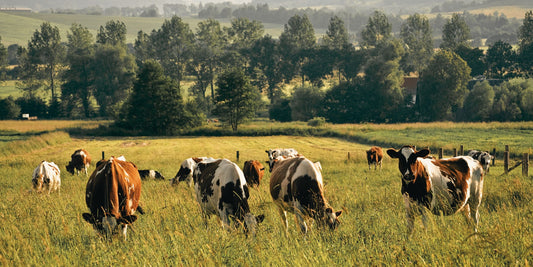Where are peanuts grown?
Peanuts are grown worldwide, with production on every continent except Antarctica. In Europe, cultivation is limited, but present in countries such as Spain and Greece. In the Americas, the southern states of the USA, particularly Georgia, are major producers, along with Argentina, one of the largest exporters in the world. In Africa, Asia and Oceania, countries such as Nigeria, China and Indonesia lead peanut production, with China being the largest producer worldwide. Australia is the main producer in Oceania, with growing areas in Queensland and New South Wales.
What Types of Peanuts Are Produced?
Runner Peanuts
Runner peanuts, grown primarily in the United States, are typically used in peanut butter because of their uniform shape and easy roastability.
Virginia Peanuts
Virginia peanuts, known for their large kernels, are often used in premium peanut products. They are grown primarily in Virginia and the Carolinas.
Spanish peanuts
Spanish peanuts, known for their high oil content and reddish-brown skin, are often used in peanut candy. They are typically grown in the United States, South Africa and Argentina.
Valencia peanuts
Valencia peanuts, often used for boiled peanuts because they are sweeter, can have up to four kernels per pod. They are typically grown in the southwestern United States.
Special peanuts
Organic Peanuts
Organic peanuts, grown without synthetic fertilizers and pesticides, are used in high-demand peanut products and can be any type of peanut.
High-oleic peanuts
High-oleic peanuts, which are bred for longer shelf life because of their high oleic acid content, are another specialty.
How Are Peanuts Grown?
Growing peanuts begins with preparing well-drained, sandy loam soils with a pH of 5.8 to 6.2, making sure they are weed-free and free of debris to create a fine seedbed. Planting occurs in late spring when soil temperatures reach 18-21°C. Quality seeds are sown 3.8-5 cm deep with adequate spacing for optimal growth.
Peanuts go through stages of germination, vegetative growth and flowering, forming unique stems that grow into the soil to develop peanuts. Consistent irrigation and balanced fertilization with phosphorus and potassium support healthy growth. Peanuts fix nitrogen from the air through root nodules, which reduces the need for nitrogen fertilizers. Pest and disease management through integrated pest management (IPM) strategies, crop rotation and resistant varieties is critical. Regular monitoring and appropriate fungicide applications maintain plant health.
Harvesting occurs 120-160 days after planting, with plants being lifted to expose the peanuts and drying them in the field. Further drying reduces moisture content before the peanuts are cleaned, sorted and stored in a cool, dry place to prevent spoilage. The harvested peanuts are then processed into various products, including roasted peanuts, peanut butter and peanut oil. This systematic approach ensures efficient and sustainable production.
How does climate change affect peanuts?
Climate change affects peanut cultivation in many ways. Temperature fluctuations can cause heat stress, reducing yields and disrupting key life cycle stages. Irregular rainfall patterns, such as floods and droughts, hamper crop growth by causing waterlogging or dryness. Extreme weather events such as hurricanes, storms and frost can cause severe damage to soil and crops. In addition, temperature changes can promote the spread of pests and diseases. Rainfall variability affects soil moisture and erosion, affecting crop water needs and soil health. Adaptations in cultivation practices and innovative solutions are needed to ensure peanut production under changing climate conditions.
Sources:
https://nationalpeanutboard.org/news/peanut-types/
https://extension.uga.edu/publications/detail.html?number=B1146&title=peanut-production-field-guide
https://www.ers.usda.gov/publications/pub-details/?pubid=37830
https://www.peanutsusa.org.uk/us-peanuts-eu-law/73-us-peanut-varieties
https://www.clemson.edu/extension/agronomy/crops/peanuts.html


























